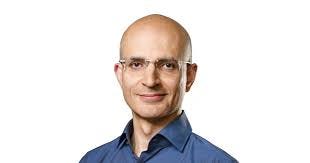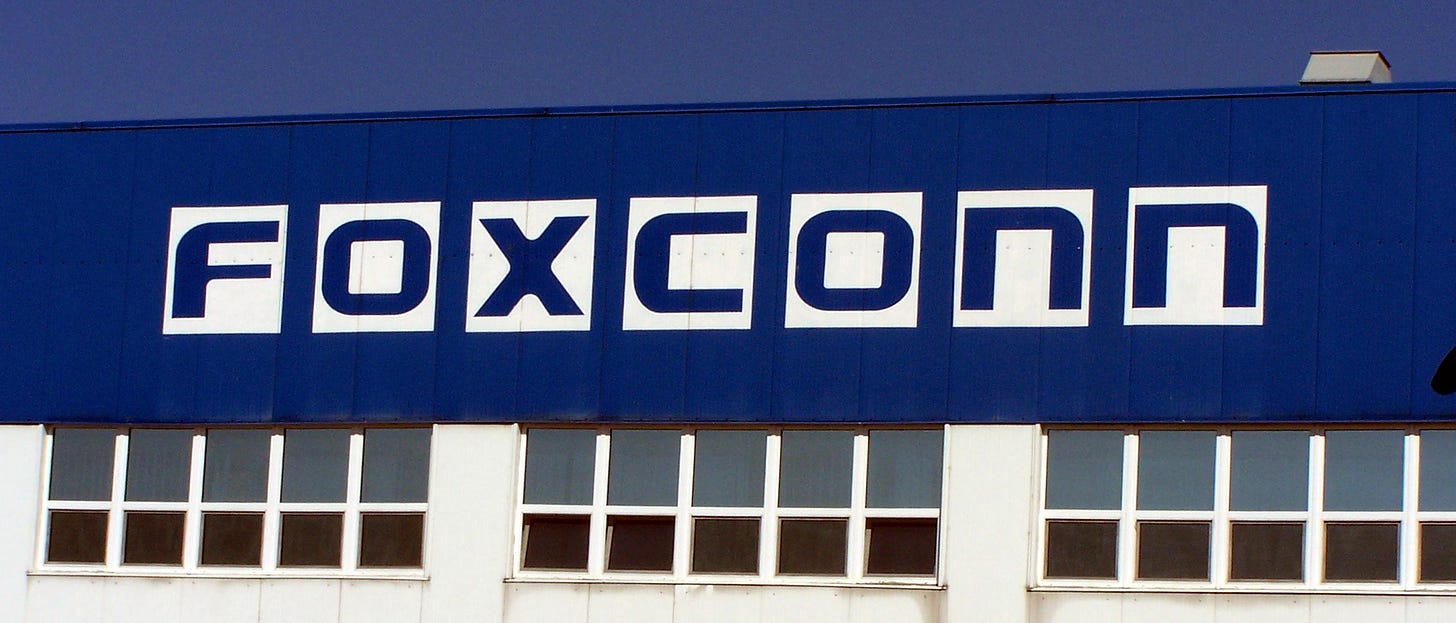Can Sabih Khan Quickly Reduce Apple’s Reliance on Chinese Imports
As Apple’s Chief Operating Officer Sabih Khan faces major challenge of moving manufacturing from China to the U.S. and perhaps India
(Photo: Sabih Khan, Apple, Chief Operating Officer)
July 13, 20250
Apple relies on China for an estimated 80% of its production capacity for iPhones according to CNBC; as well as for most of the components for its iPads, watches, laptops, and computers. Since roughly 2000. the low-cost, high quality, mass scale, outsourced manufacturing in China is a key reason for the explosive business success of the Cupertino, California, company.
In fiscal year ended September 2024, Apple earned an operating income of $123 billion on $391 billion in revenues, a 31% profit margin, one of the highest for a hardware company. Apple has a market value $3.2 trillion, up more than 1,100-fold over the past 25 years.
Tim Cook, Apple’s Chief Executive since 2011, is an expert on the global supply chain for components and manufacturing of smartphones and other digital devices. In fact, starting in 1998, while Chief Operating Officer, Cook moved production from in-house plants to contractors in China. Earlier, as a vice president at Compaq, 1997, he was responsible for procuring and managing all of product inventory; and, from 1982-1994, as a director at IBM, he led the manufacturing and distribution functions for personal computers in North and Latin America.
Given the importance of managing its supply chain, it is not surprising that last week Apple named Sabih Khan as the Chief Operating Officer, the most senior manager after Cook. Khan’s professional background is very similar to that of Cook. Since 2019, Khan, 59-years-old, has managed Apple’s global supply chain: ensuring product quality and overseeing planning, procurement, manufacturing, logistics, and product fulfillment functions.
Khan joined Apple’s procurement group in 1995. Earlier he worked as an applications development engineer and key account technical leader at GE Plastics. He earned a master’s degree in mechanical engineering from Rensselaer Polytechnic Institute, New York State, and a bachelor’s degrees in economics and mechanical engineering from Tufts University, Boston.
Sabih Khan was born in Moradabad, Uttar Pradesh, India. He lived in India until his fifth grade. His family then moved to Singapore, where he finished high school.
As COO of Apple, Khan will see a sizeable boost in his income. In fiscal year 2024, Jeff Williams, whom Khan replaced, earned $27 million. Williams also owned Apple stock worth $83 million.
(Photo: an Apple iPhone)
Khan faces huge supply chain challenges compared to Cook, who had to mostly tackle technological, logistical, and managerial issues. In the 2000’s, Cook’s expansion of Apple’s supply chain in China benefitted from two major factors. First, there were no significant tariffs imposed on Apple’s imports into the U.S., even as the company outsourced nearly its entire manufacturing to China. Second, China was spending trillions of dollars to rapidly develop its infrastructure and manufacturing capabilities to boost economic growth, including by attracting foreign companies like Apple and its major Taiwanese contract manufacturer, Foxconn, to set up plants.
The U.S., which accounts for 40% of Apple’s revenues, is by far its largest market, The company does not disclose what portion of its supplies are sourced from the U.S. It is likely very small; mainly semi-conductor chips and the glass used in iPhones.
In February this year, President Donald Trump imposed 10% tariffs on Chinese imports into the United States. He temporarily waived the tariff on smartphones, computers and other dgital devices, shielding much of Apple’s imports from China. Trump wants Apple to stop selling China made products in the U.S. as well as move more of its manufacturing to the U.S.
Khan’s main challenge will be to source enough supplies from outside China to avoid U.S. tariffs hurting Apple’s profitability. Part of Apple’s U.S. supplies will come from the U.S. Soon after Trump’s tariffs on China, Apple announced that the company and thousands of its suppliers will invest more than $500 billion in the U.S. by 2029. Plans focus on high value manufacturing, including an advanced facility in Houston to support the infrastructure for Apple Intelligence products and services, creating an academy in Michigan to train its supply manufacturers, and expanding research and development.
Apple will try to contain manufcaturing costs in the U.S. by setting up highly automated plants, which is one of Khan’s expertise. As, Cook said in his statement last week, on Khan’s appointment as COO, Khan “has helped pioneer new technologies in advanced manufacturing, overseen the expansion of Apple’s manufacturing footprint in the United States, and helped ensure that Apple can be nimble in response to global challenges.”
Khan will also try to source more of Apple’s U.S. sales from India. By 2027, to avoid tariffs on Chinese imports, Apple expects to ship from India roughly 60 million iPhones that it sells annually in the U.S., more than a quarter of its 230 million global sales. Indian officials are confident that Apple will move much of its manufacturing from China to India.
India is the second-largest exporter of smartphones, after China. However, unlike China, India is an assembler, not a manufacturer, of smartphones, as economist Sunil Mani noted in Global Indian Times. India imports, mostly from China, nearly three quarters of the components used to manufacture even the low-end smartphones; the imported content is higher for iPhones.
(Photo: courtesy Wikimedia.)
Apple may try to retain as much of its supply chain in China as it can for products sold outside the U.S. and to appease the government in China, its second largest market. Reducing Apple’s China supplies may not be easy, at least without raising costs, since it relies on more than a 1,000 local suppliers. Also, moving even part of its production to the U.S. and India could also raise costs, hurting profitablity.
Compared to China, both India and the U.S. face a major shortage of skilled technical labor, which is necessary to manufacture highly engineered digital products. This major edge of China over the U.S. - and more so over India - was pointed out by Apple CEO Cook himself. In 2015, he told CBS’s 60 Minutes, “You can take every tool and die maker in the United States and probably put them in a room that we’re currently sitting in. In China, you would have to have multiple football fields.”
China has more than 10,000 vocational schools, enrolling more than 30 million students, which graduate a range of technicians from junior to senior levels. India’s Industrial Training Institutes graduate less than a tenth of China’s technical labor, with less than a fifth of them receiving the required technical training.
Also, while Chinese manufacturing labor productivity is lower than that of an American worker, it is estimated to be more than twice that of an Indian. So Apple will likely incur higher costs on production it moves to India.
India, with a population similar in size to China’s 1.4 billion, may appear to be a large potential market for Apple, while it scales up local production. Yet, Apple’s sales of mobile phones in India - around 12 million - is only a quarter of that sold in China. This is because consumer purchasing power in India is very low, with a median household income of roughly $2,700, compared to $13,000 in China; it is $80,600 in the U.S. Not surprising that mobile phones from China’s Vivo, Xiaomi, and Oppo, which are 50% or more cheaper than iPhones, account for roughly half the 112 million mobile phone sales in India, according to Counterpoint Research.
India could be a major source of supply for Apple. But, for this to happen, the Indian government needs to invest hundreds of billions of dollars to expand and modernize transportation, energy, logistics, and other infrastructure as well as to provide advanced, jobs-based training for millions of technical laborers.
China’s research and development spending is $715 Billion, ten times larger than that in India. As a result, in the digital products supply chain, China makes most parts from mining and refining rare earth minerals, including neodymium and terbium which contribute to the color and brightness of the screens of iPhones, batteries, camera modules as well as manufacturing nearly two fifths of the global supply of semiconductor chips.
In terms of infrastructure, China’s major achievements include more than 100 cargo-handling airports and the world’s largest high-speed rail network. In contrast, India has only four big cargo handling airports and its first high-speed rail network, of roughly 300 miles, is under construction.
In addition, India faces constraints which are widely covered in the western business media including: the grip of large Indian industrial groups on economic policies; efforts by the groups to protect their profitable businesses, which cause bureaucratic and regulatory hurdles; power shortage; port congestion; and negligible industry-academic collaboration.
Last week, in a statement announcing Sabih Khan’s promotion to COO, Apple CEO Tim Cook stated, “Sabih is a brilliant strategist who has been one of the central architects of Apple’s supply chain.” Managing supplies from China, U.S., and India, while trying to avoid tariffs and keep costs low, Apple and Khan face a tough road ahead.
(Updated July 14, 2025)




